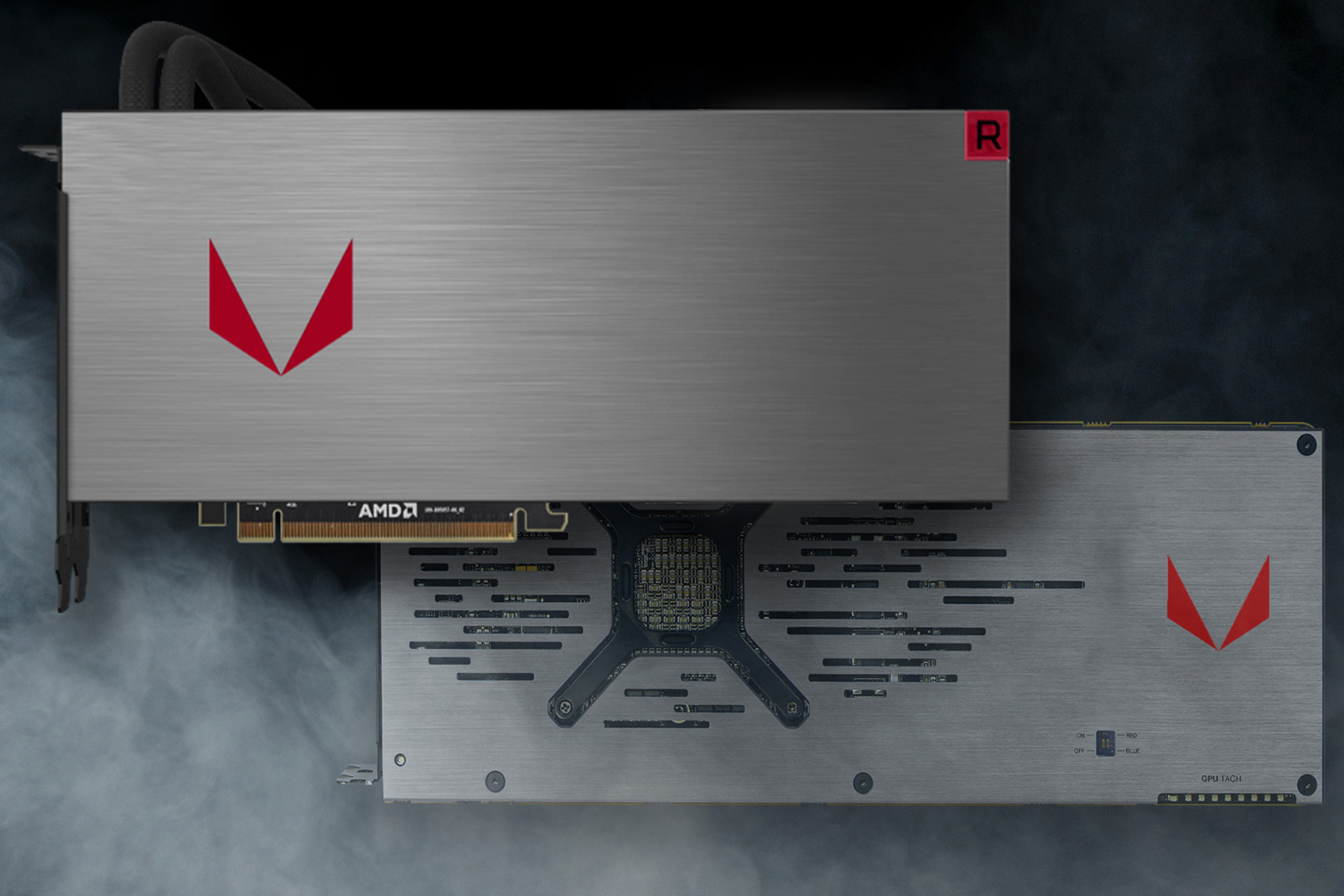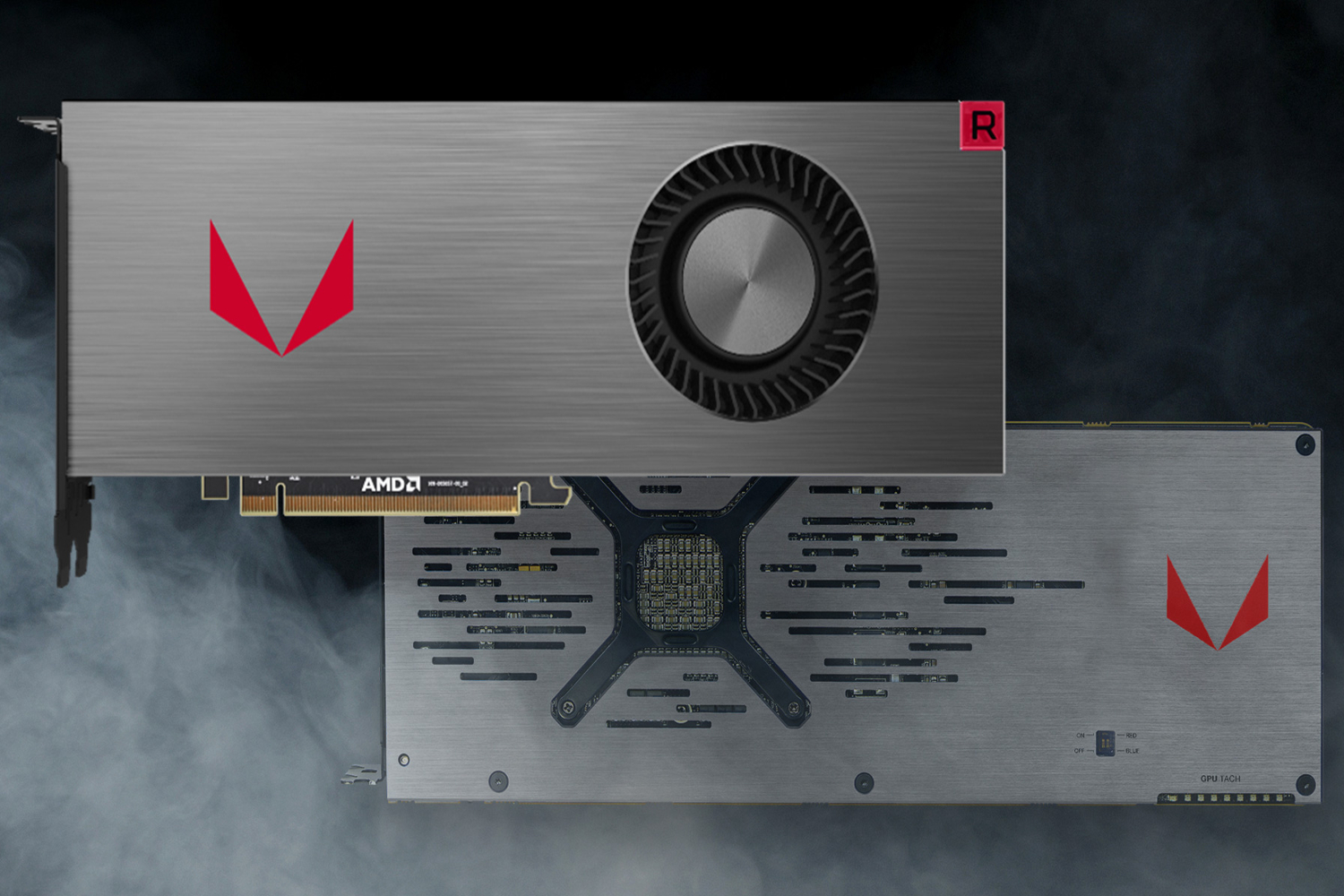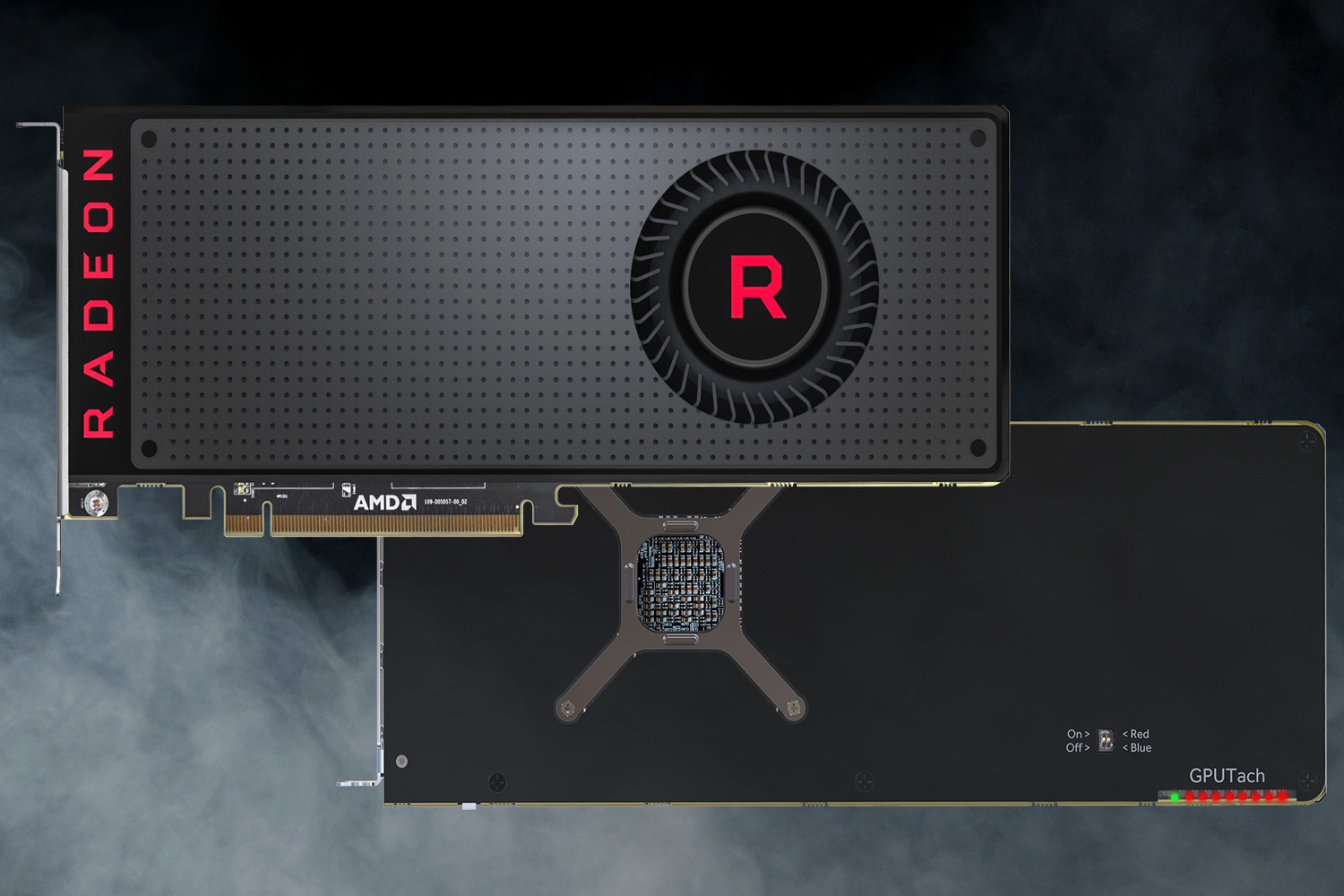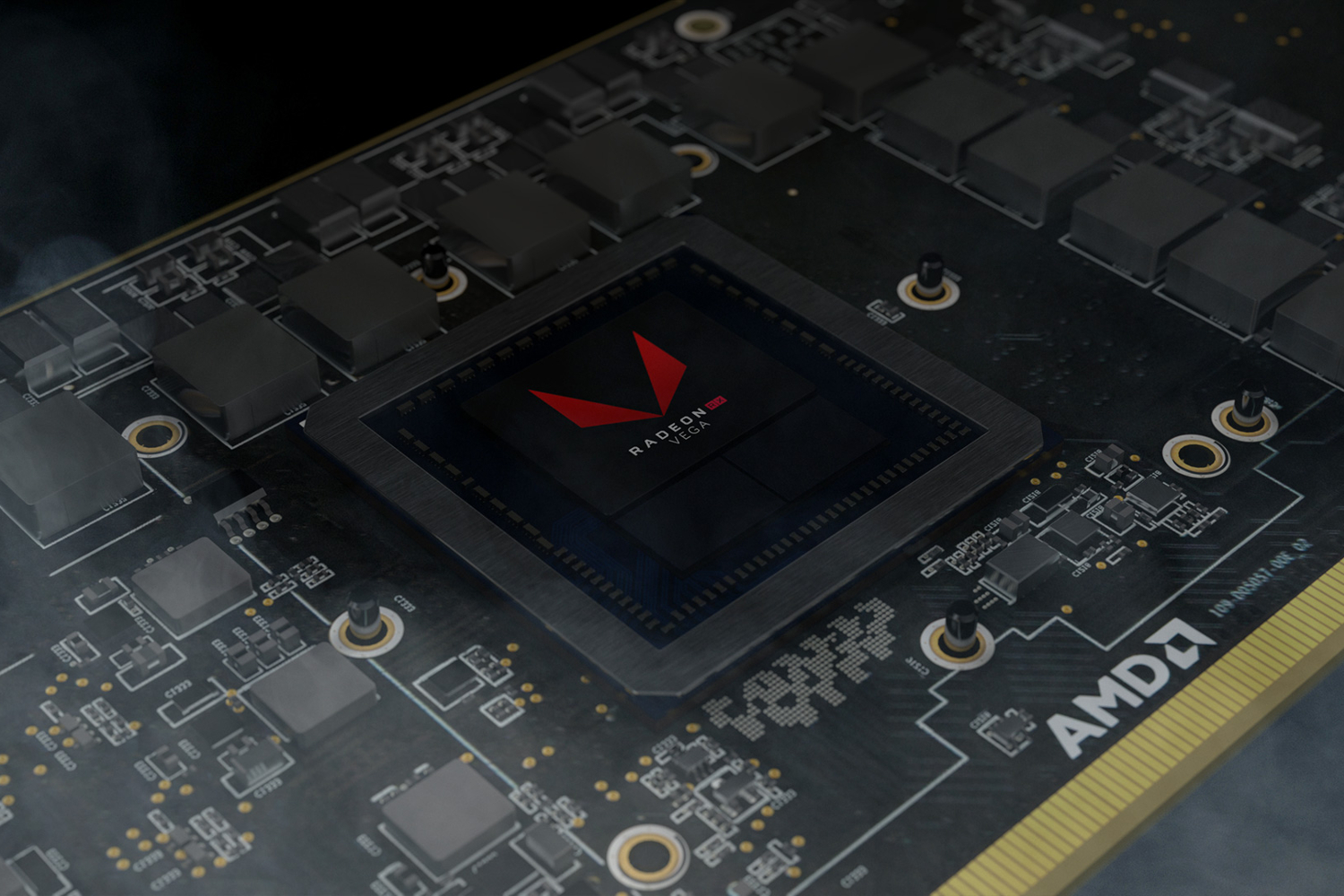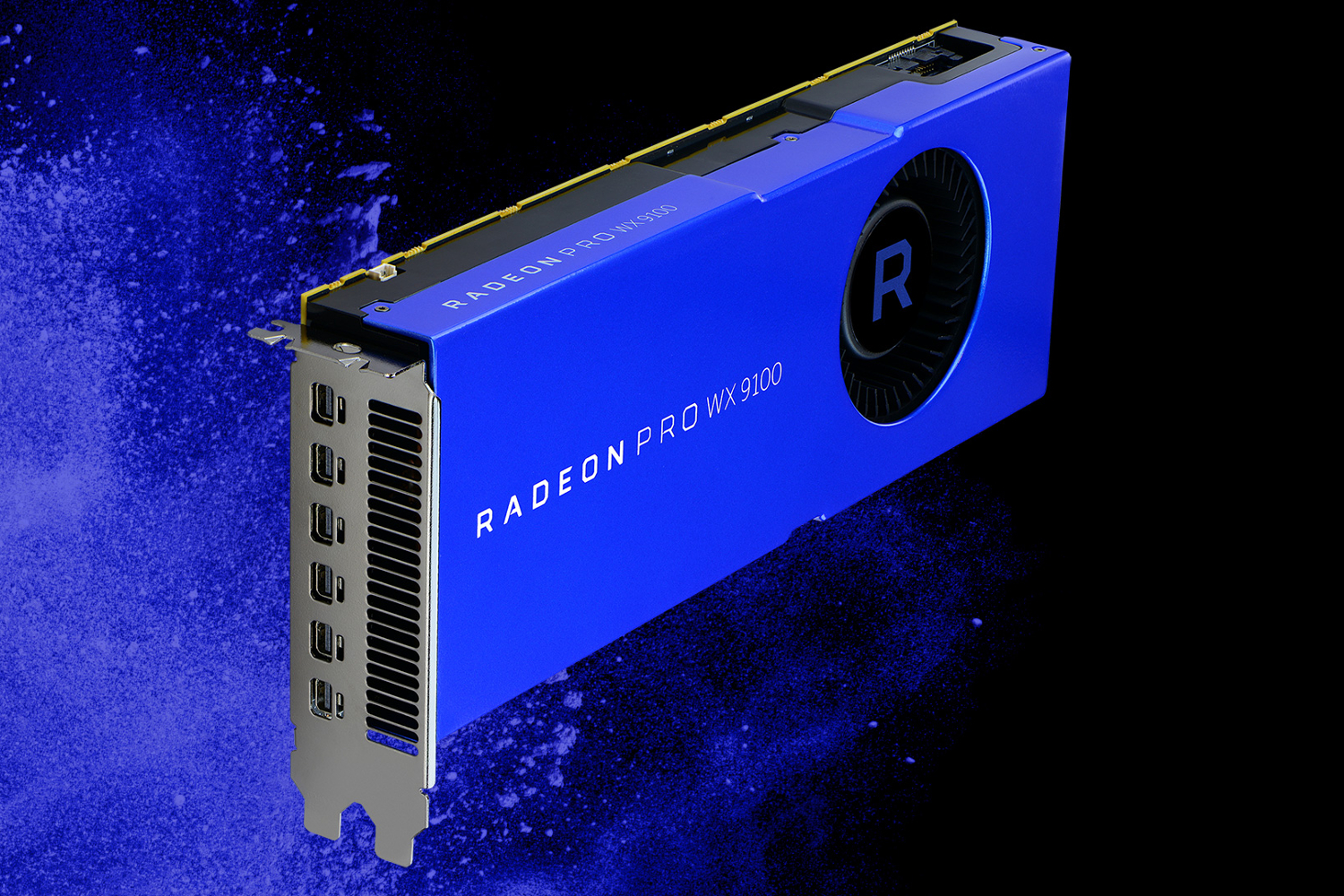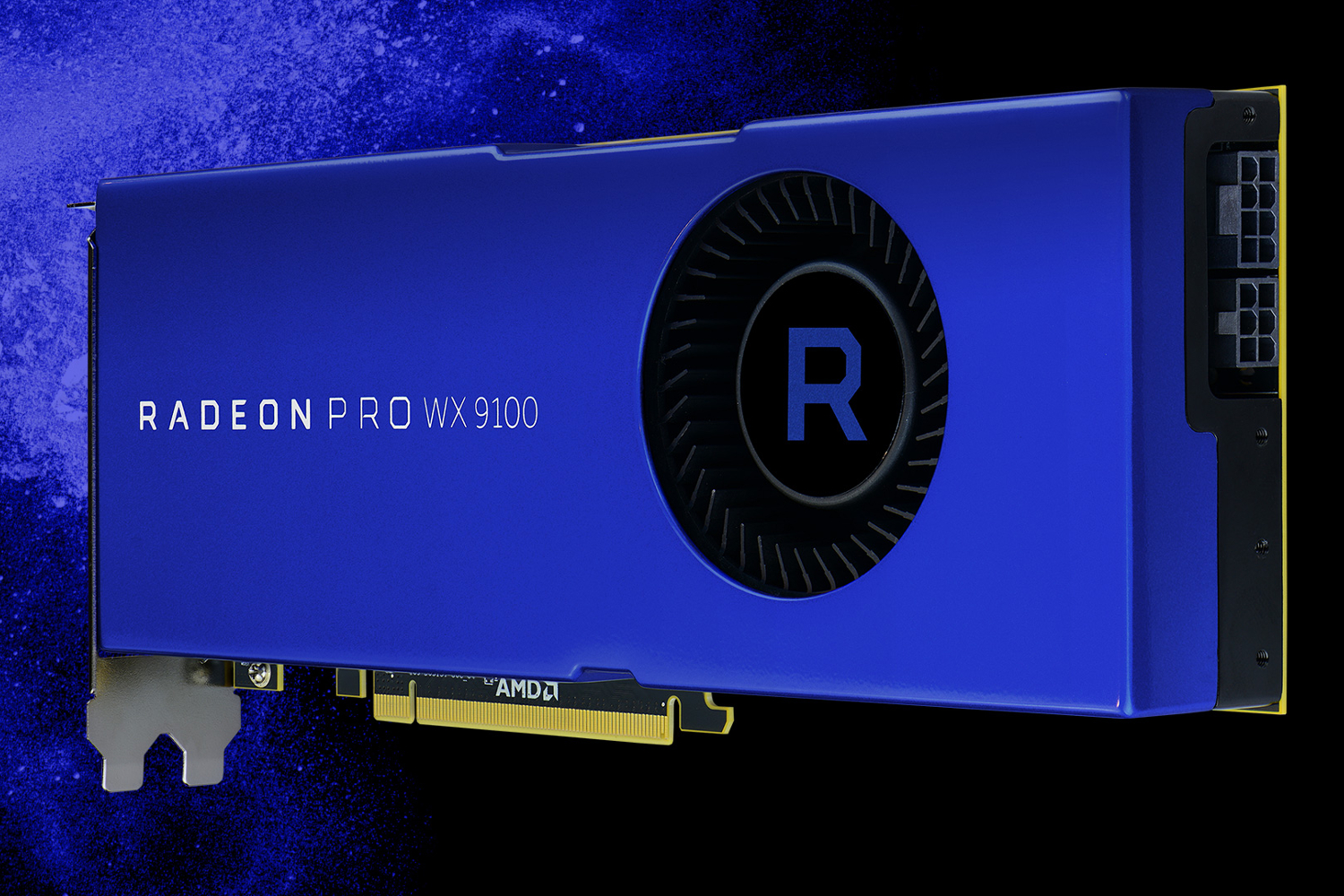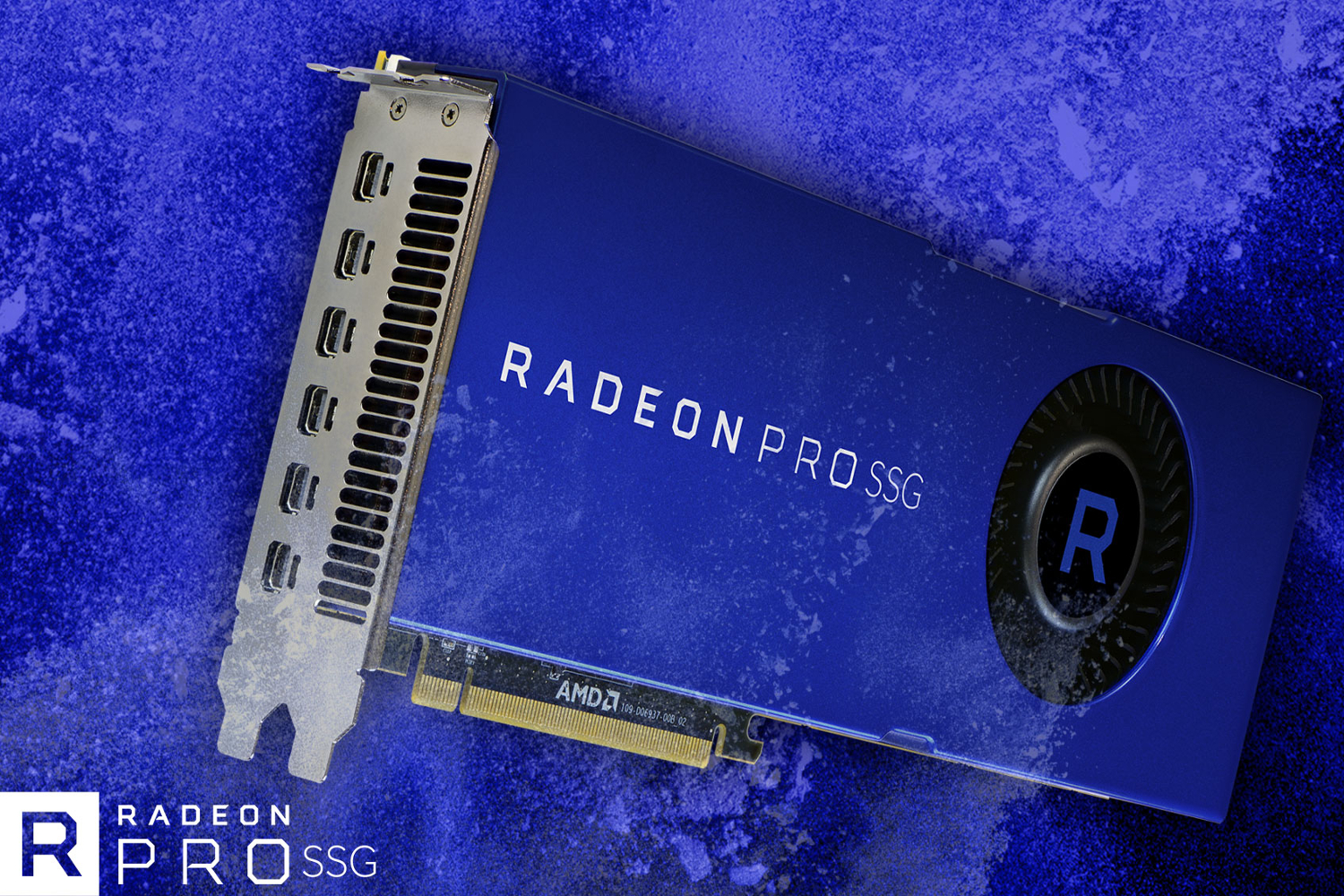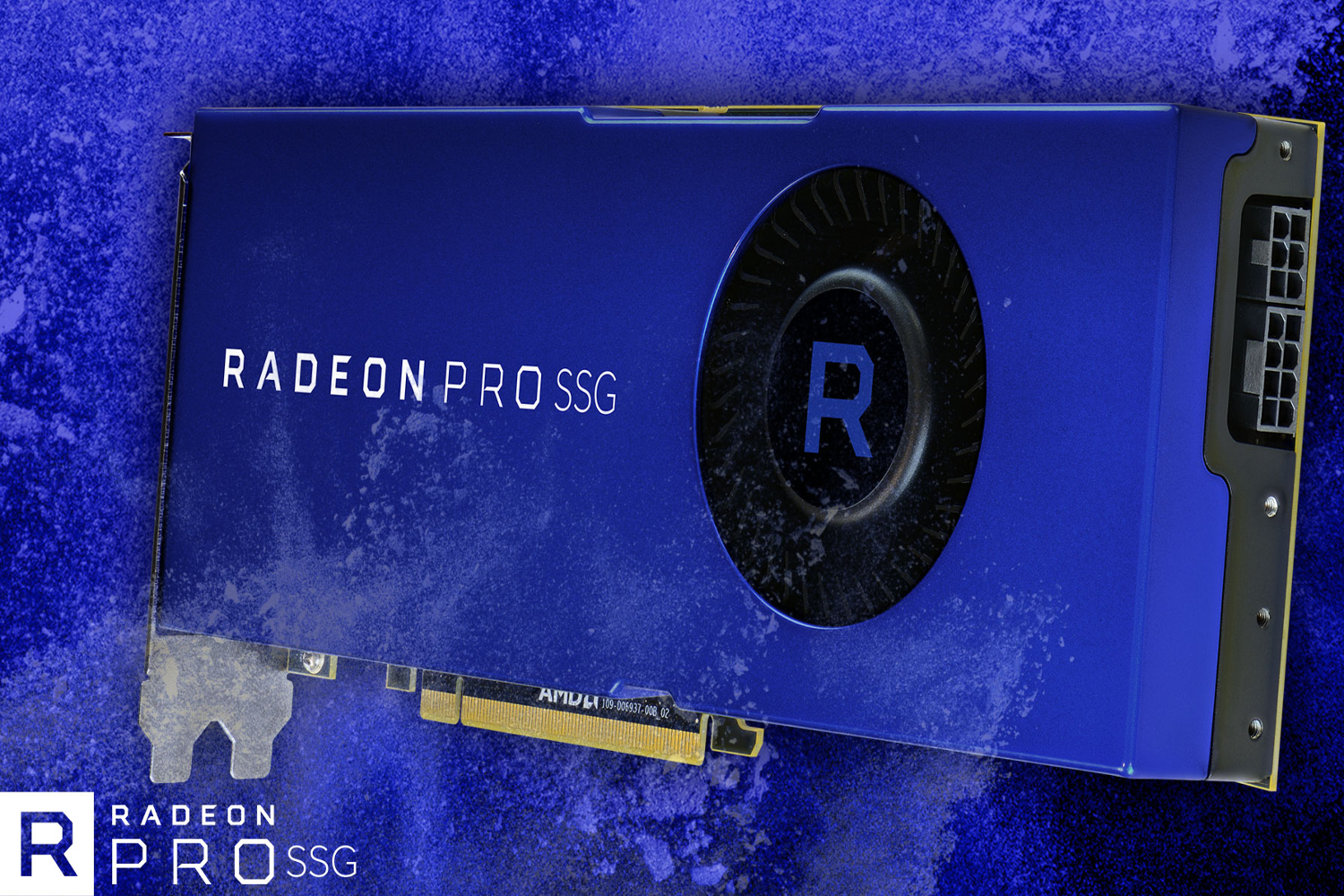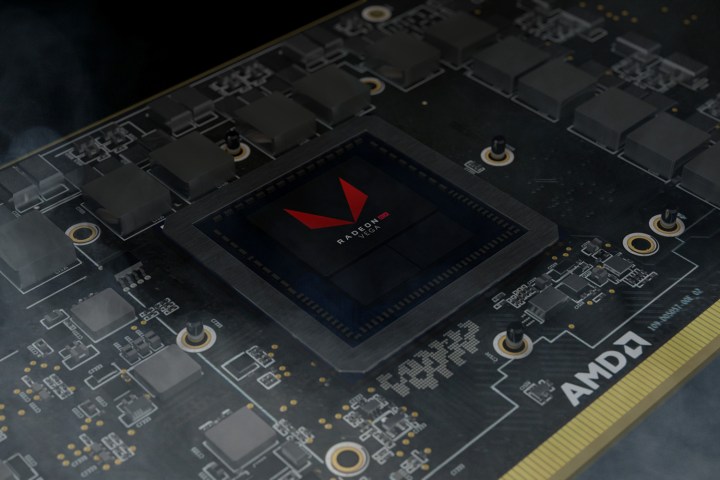
So what exactly is Vega?
Vega is the latest graphics chip design from AMD. It follows 2016’s “Polaris” design used in the low-cost Radeon RX 400 and 500 Series cards for the mainstream market. But unlike Polaris, Vega targets the high-end and enthusiast realm along with the processional workstation market. Vega provides better overall compute performance than Polaris and AMD’s previous “Fiji” design used in its high-end Radeon R9 graphics cards for PC gaming, which were launched in 2015.
According to AMD, Vega includes a next-generation pixel engine for faster, more efficient shader performance. It also has a re-designed geometry engine to handle the increasingly complex nature of architecture and landscapes found in games.
Vega also introduces a new memory controller that supports on-board and system-installed SSDs, dedicated high-bandwidth cache, and HBM2 memory. These advancements make the current Vega hardware promising, and should serve as a good foundation for future iterations.
Vega for PC gamers
AMD’s new Radeon RX Vega-branded desktop add-in cards target PC gamers, and use High Bandwidth Memory 2, which stacks up to eight DRAM dies vertically in a single memory package rather than spread them out horizontally. This enables more memory capacity in a smaller space while consuming less power. According to AMD, the second generation is capable of up to two giga-transfers per second (2GT/s), and up to 256GB per second in bandwidth.
The on-board memory is managed by AMD’s new High-Bandwidth Cache Controller (HBCC). It consists of algorithms that are designed to handle huge sets of data, and enables developers to program memory management into their games and software that don’t affect the overall performance. It helps eliminate the bottleneck that causes a graphics chip to pause for milliseconds to load resources, textures, and so on, which in turn causes frame drops.
What is important to note is how the Vega GPU, HBM2 memory, and HBCC is installed. Prior to Vega, graphics memory was a separate component soldered onto the card itself, and only accessible by the graphics chip. But with AMD’s latest GPU design, Vega 10, the company crammed the HBM2 memory, memory controller, and graphics chip components into a single “package.” The end result is better performance just in the communication between the on-board memory and GPU alone.
To be clear, GlobalFoundries manufacturers the actual Vega GPU components via 14nm FinFET process technology, such as the pixel engine, compute engine, geometry pipeline, and so on. Advanced Semiconductor Engineering (ASE) then crams the GPU components, HBM2 memory, and so on into a single all-in-one chip. SK Hynix and Samsung Electronics manufacture the integrated HBM2 memory.
Technically, there are only two Radeon RX Vega cards provided by AMD: the Radeon RX Vega 64, and the Radeon RX Vega 56. Each model is air-cooled by on-board fans, but there’s a water-cooled version of the Radeon RX Vega 64 too, that’s supposedly offered exclusively through special bundles.
Here are the specifications of all three versions:
| Compute Units |
Stream Processors |
Base Speed |
Boost Speed |
Memory Size |
Starting Price |
Available? | |
| Radeon RX Vega 64 |
64 | 4,096 | 1,247MHz (air) —— 1,406MHz (liquid) |
1,546MHz (air) —— 1,677MHz (liquid) |
8GB HBM2 |
$500 | Now |
| Radeon RX Vega 56 |
56 | 3,584 | 1,156MHz | 1,471MHz | 8GB HBM2 |
$400 | Now |
What do these specifications mean in practice? To find out, we performed a full review of the Radeon RX Vega 56 and 64, running them through 3DMark and several of our favorite games. While there’s a lot of nuance to the results, they generally proved the Vega cards capable of beating the GTX 1080. Even the less expensive RX Vega 56 often beat it. That’s not a bad result for AMD.
AMD says that, for now, the liquid-cooled version of the RX Vega 64 currently won’t be sold outside the $700 Radeon Aqua Pack. AMD is offering optional bundles for the air-cooled cards as well: the Radeon Red Pack for $500 (RX Vega 56), and the Radeon Black Pack for $600 (RX Vega 64 air-cooled). All three bundles include a $200 discount off Samsung’s 34-inch WQHD curved FreeSync-based monitor (C34F791), and a $100 discount off a Ryzen 7 CPU/motherboard combo (Asus, Gigabyte, and MSI only). The bundles include copies of Prey and Wolfenstein II: The New Colossus as well.
Here are the current processor and motherboard requirements for all three Radeon RX Vega bundles:
| Processors | Motherboards |
| Ryzen 7 1700X Ryzen 7 1800X |
Asus ROG Crosshair VI Extreme X370 Gigabyte GA-AX370—Gaming K7 MSI X370 Xpower Gaming Titanium |
Of course, customers can purchase the air-cooled Radeon RX 64 and install a water block on the card to get those recorded higher speeds. AMD says that customers looking for a water-cooled Vega 64 card outside the current locked bundle may be able purchase one from third-party partners in the fourth quarter of 2017. That indicates AMD has a temporary launch-specific lock-down on water-cooled Radeon RX Vega 64 products, including the Sapphire Radeon RX Vega 64 8G HBM2 Liquid Cooling model, and Gigabyte’s Radeon RX Vega 64 Watercooling 8G.
Vega 64 launches at high pricing, limited availability
After recently performing a thorough search of the new Radeon RX Vega cards on Amazon, Newegg, and Ebay, we discovered that pricing has quickly climbed, and almost every stand-alone card is sold out.
For the moment, most Radeon RX Vega 64 cards sold through Newegg are marked as “sold out” whether they’re cooled by air or liquid. Those few cards available aren’t actually sold but Newegg, but instead through third-party partners, which have jacked up prices to $800 and beyond.
What’s not sold out on Newegg are the Vega-based Radeon Packs (bundles), and that’s likely because they already include the processor, motherboard, and in some cases the display. That said, bundle prices are currently rather hefty, ranging from $1,010 to $2,046. Ouch.
Meanwhile, Vega 64 listings are slowly growing on Amazon through manufacturers and Amazon’s third-party sellers. But at the time of this publication, Amazon listings were sold out, had only one or two units in stock, or wouldn’t actually have stock until the end of August. Vega 64 cards are also becoming more plentiful on Ebay, with bids starting at $525 before shipping costs.
Here are the current highs and lows for all three outlets selling Radeon RX Vega 64 cards:
| Highest Price | Lowest Price | |
| Amazon | $1,710 | $700 |
| Newegg | $850 | $600 |
| Ebay | $1,220 | $525 |
The big numbers on Amazon and Ebay are expected — sellers are taking full advantage of the currently limited Radeon RX Vega 64 supply. Given the cards didn’t hit the market until August 14, the limited numbers and “out of stock” labels were presumably thought to stem from a hardware release bottlenecked on purpose by AMD and card makers to gauge/drive market demand. Thus, either the shallow stock was eaten up by PC gamers, or cryptocurrency miners are the culprits behind the current Radeon RX Vega 64 vacancy.
But a recent report indicates that the limited availability isn’t on purpose at all. The problem appears to be in creating the all-in-one Vega package (chip) housing the HBM2 memory, memory controller, graphics chip components, and so on. This is reportedly a difficult process, and one that has a low yield rate. In other words, the incorrectly manufactured chips outweigh the correct ones. Sources add that the packaging technology used by ASE is the root of the manufacturing issues.
In short, pricing is a bit of a mess at the moment. Cards are selling for more than anticipated, and the bundles do not appear to be working as AMD had initially indicated. Unfortunately, the Radeon RX Vega 64 dry spell could continue into October.
Vega for professionals
Unlike the high-end Radeon RX Vega models designed for the PC gaming market, AMD appears to be more inclined to use the term “cache” with its professional Radeon Pro-branded add-in cards. The memory is still based on HDM2 technology, but the specifications refer to it as High Bandwidth Cache (HBC). Yet thanks to the on-board HBCC and Vega’s support for using SSD storage as on-board memory, AMD actually crammed a 2TB NVMe PCI Express 3.0 SSD onto the Radeon Pro SSG model. The company calls this solid state graphics (SSG).
“The Radeon Pro SSG physically co-locates high performance NVMe’s alongside the high-performance Vega-based GPU to create an optimized path for transferring and processing large data sets,” the company states.
What’s really interesting about AMD’s two new Vega-based Radeon Pro cards is the inclusion of a dedicated security processor inside the graphics chip. This processor creates a secure environment for running “intellectual property-sensitive” tasks while everything else runs outside the secure bubble. This processor also performs boot and firmware validations every time the PC is turned on or restarted, and works in conjunction with Microsoft’s Device Guard malware defense service.
The two cards are complemented by AMD’s new “Radeon Pro Software Crimson ReLive Edition for Vega-based Radeon Professional Graphics” software. The name is admittedly long, but so is the list of features the driver suite brings to AMD’s processional Vega-based cards. These include the integration of Radeon ProRender into Maxon Cinema 4D Release 19, updated ProRender plugins, support for switching between three drivers without the required reboot, and more.
| Compute Units |
Stream Processors |
Base Speed |
Boost Speed |
Memory Size |
Price | Available? | |
| Frontier Edition |
64 | 4,096 | 1,382MHz | 1,600MHz | 16GB HBC (HBM2) |
$1,000 | Yes |
| Radeon Pro WX 9100 |
64 | 4,096 | TBD | 1,500MHz | 16GB HBC (HBM2) |
$2,200 | September 13 |
| Radeon Pro SSG |
64 | 4,096 | TBD | 1,500MHz | 16GB HBC (HBM2), 2TB NVMe SSG |
$7,000 | September 13 |
Should you buy a Vega-based card?
Based on the hardware and the numbers in our review, AMD appears to be addressing a portion of the high-end mainstream desktop market currently ruled by Nvidia’s GeForce GTX 1080 Ti, 1080, and 1070 graphics cards. AMD’s video cards are indeed competitive when priced at MSRP.
However, as we’ve noted above, availability of the cards is a major issue — which isn’t a big surprise, given their recent launch and appeal to cryptocurrency miners. It may be awhile before RX Vega 56 and 64 cards are readily available at reasonable prices.
Updated on August 25, 2017, by Kevin Parrish to reflect Radeon Vega vacancy issue.
Editors' Recommendations
- Everything you need to know about buying a GPU in 2024
- What is NVMe? Everything you need to know about high-speed storage
- AMD FSR (FidelityFX Super Resolution): everything you need to know
- What power supply do you need for the AMD Radeon RX 7900 XTX?
- AMD Radeon RX 7000 series: Everything we know about the RDNA 3 GPU
